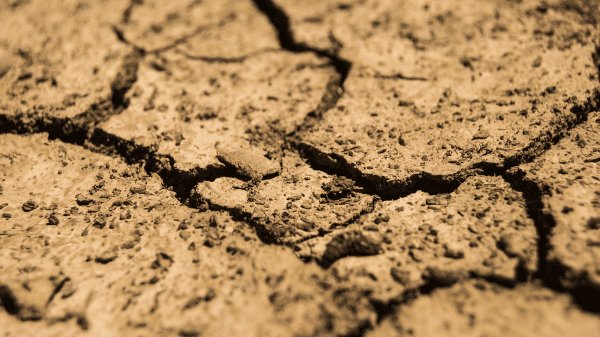Thirty-five years ago, this scenario would have struck observers of California agriculture as dystopian and nightmarish, much like the 2019 Los Angeles of Blade Runner.
Unlike that LA, where it rains all the time, the problem is at the opposite end of the spectrum. Torrential rains in the early part of the wet season (October) were followed by a dry period that has continued up to now.
Since it doesn’t rain in any appreciable amount in most of California between April and October, the state has about a month of possible precipitation to come this season. This is the third consecutive dry year the state has to face.

The U.S. Bureau of Reclamation (USBR), which administers the federal Central Valley Project, has announced drastic cuts in projected water supplies to many of its customers this year.
Some key features, according to a USBR press release:
“• Irrigation water service and repayment contractors north-of-Delta are allocated 0% of their contract total.
“• M&I water service and repayment contractors who are serviced directly from the Delta are allocated 25% of their historical use.
“• Irrigation water service and repayment contractors south-of-Delta are allocated 0% of their contract total.”
“It’s devastating to the agricultural economy and to those people that rely on it,” Ernest Conant, USBR regional director told ABC News. “But unfortunately we can’t make it rain.”
To understand the full scope of the reductions would require a detailed knowledge of the unbelievably complex California water picture. To understand its effect on any particular grower, you would have to know exactly where that grower gets their water.
The State Water Project, administered by the California Department of Water Resources (DWR), which operates in parallel with CVP, had comparatively good news a month ago. On January 20, it said, “the Department of Water Resources (DWR) announced it is increasing the State Water Project allocation to 15 percent of requested supplies for 2022.”
DWR cited December storms, which enabled it to increase the amount of water in the San Luis Reservoir.
All the same, 15 percent of requested supplies is not that much.
A line in the DWR press release gives a clue to the issues at hand: “Water releases from Lake Oroville will be prioritized to maintain Delta water quality, protect endangered species and meet senior water right needs.” Lake Oroville is the state’s largest reservoir.
One source of infuriation for many growers in California’s Central Valley is that water priorities often favor the preservation of wildlife and the environment in the San Joaquin Delta over those of Central Valley growers. This is only one small piece in an enormous puzzle of demands, rights, and needs.
Years ago—1984, I think—I was on a “water tour” of the state led by Tim Wallace, who had been director of food and agriculture in Gov. Jerry Brown’s first administration.
It was an astonishing experience. Anyone who has even seen a small slice of the California water system cannot fail to be awed. It is one of the greatest engineering achievements of human civilization.
But its very intricacy makes the system fragile, especially in view of the California population (burgeoning until very recently) and the extremes of wetness and dryness that the region is prone to.
At present, California is experiencing dryer conditions than have prevailed since AD 800, according to a recent report published in Nature Climate Change: “After exceptional drought severity in 2021, ~19% of which is attributable to anthropogenic climate trends, 2000–2021 was the driest 22-yr period since at least 800. This drought will very likely persist through 2022, matching the duration of the late-1500s megadrought.”
This alarming situation could change next year—indeed it could change in March. At present, though, it’s safe to say that many California farmers are adjusting long-term plans to face a much drier future.



